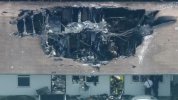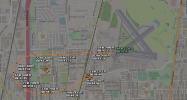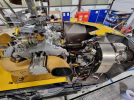There are survivors from the copter...
It looks like there may be an engine fire. I am not a rotor pilot but it sure looks like the pilot flew the copter all the way to the ground...

 wsvn.com
wsvn.com
It looks like there may be an engine fire. I am not a rotor pilot but it sure looks like the pilot flew the copter all the way to the ground...

2 dead, 4 injured after BSFR helicopter crashes in Pompano Beach apartment complex - WSVN 7News | Miami News, Weather, Sports | Fort Lauderdale
POMPANO BEACH, FLA. (WSVN) - Police responded to an aircraft emergency after a Broward Sheriff Fire Rescue helicopter went down as it headed to a<a class="excerpt-read-more"...
 wsvn.com
wsvn.com




